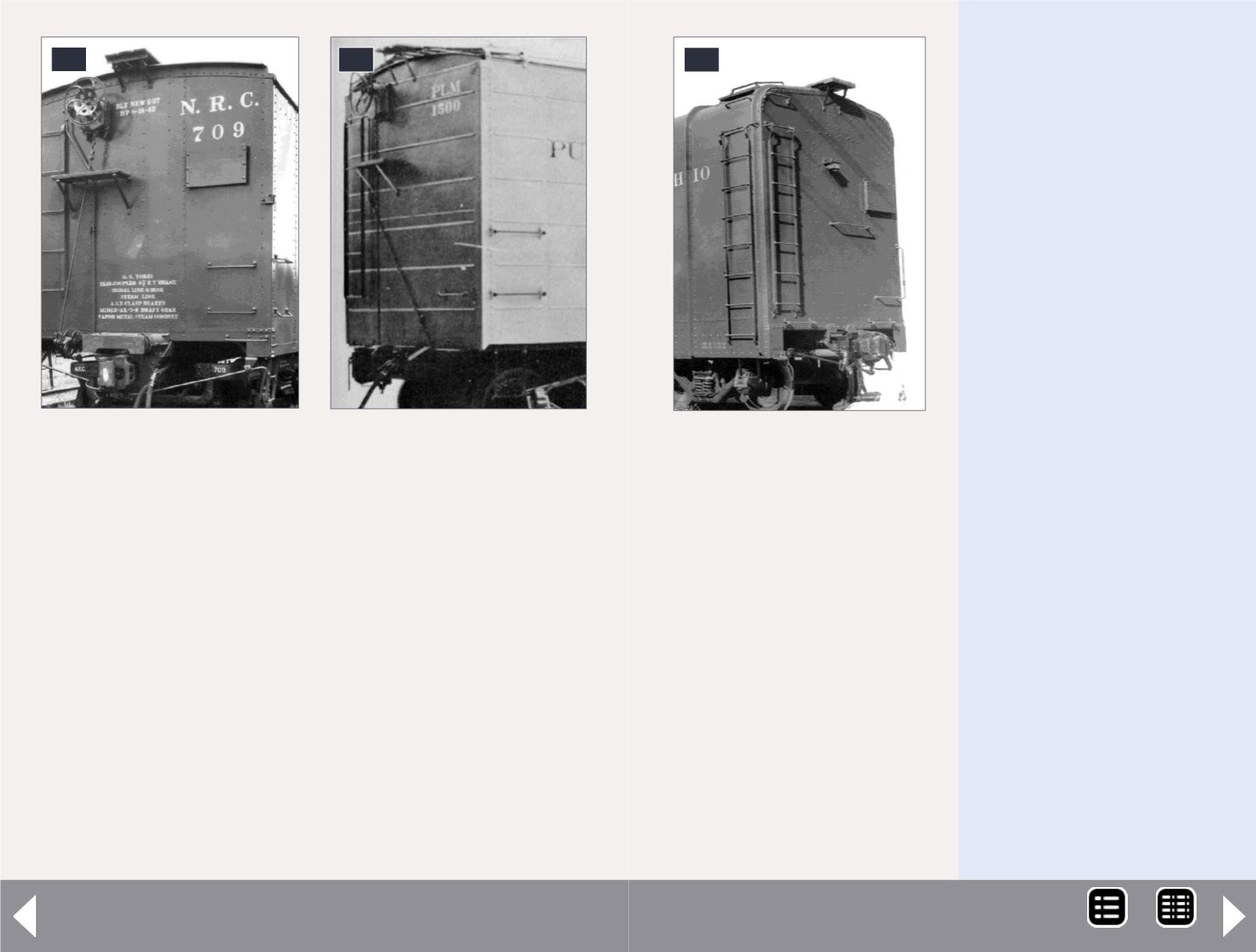
17. Flat steel end
fabricated with three
vertical panels on express
car built by Pullman-
Standard in 1937.
18. Flat steel end with
minor indentations to
match sides. Car built
in the late 1930s by
Pullman-Standard.
18
17
Boxcar ends - 6
19. B&O C-16 wagon-top
express boxcar with flat
steel end.
19
Poling Pockets
To move cars on an
adjacent track, switch
crews used a hardwood
pole about 8’ long pressed
into round poling pockets
located at the bottom
corners of the freight
car [13, 14, and 15).
The pilots and tenders
of switch engines had
similar pockets. The poles
were typically about 6” in
diameter tapering down to
3” or 4” at the ends, with
a metal band to prevent
splitting. Trainmen held
the pole in position while
the engine nudged the
car on an adjacent track
to the desired location.
When not in use, the poles
were stored under the
tender’s side sill. Poling
was dangerous, and many
railroads banned the
practice. Poling pockets
began to disappear as tow
ropes and reinforced slings
came into use. Poling was
eventually banned on all
American railroads.
MRH-Oct 2014


